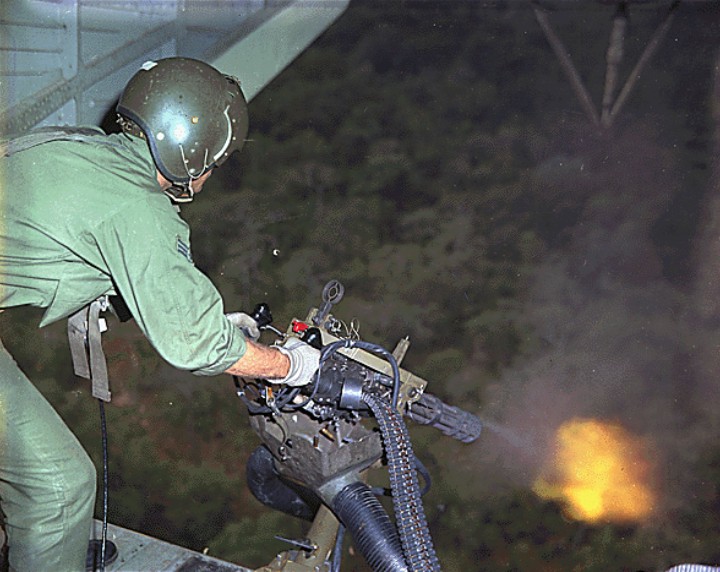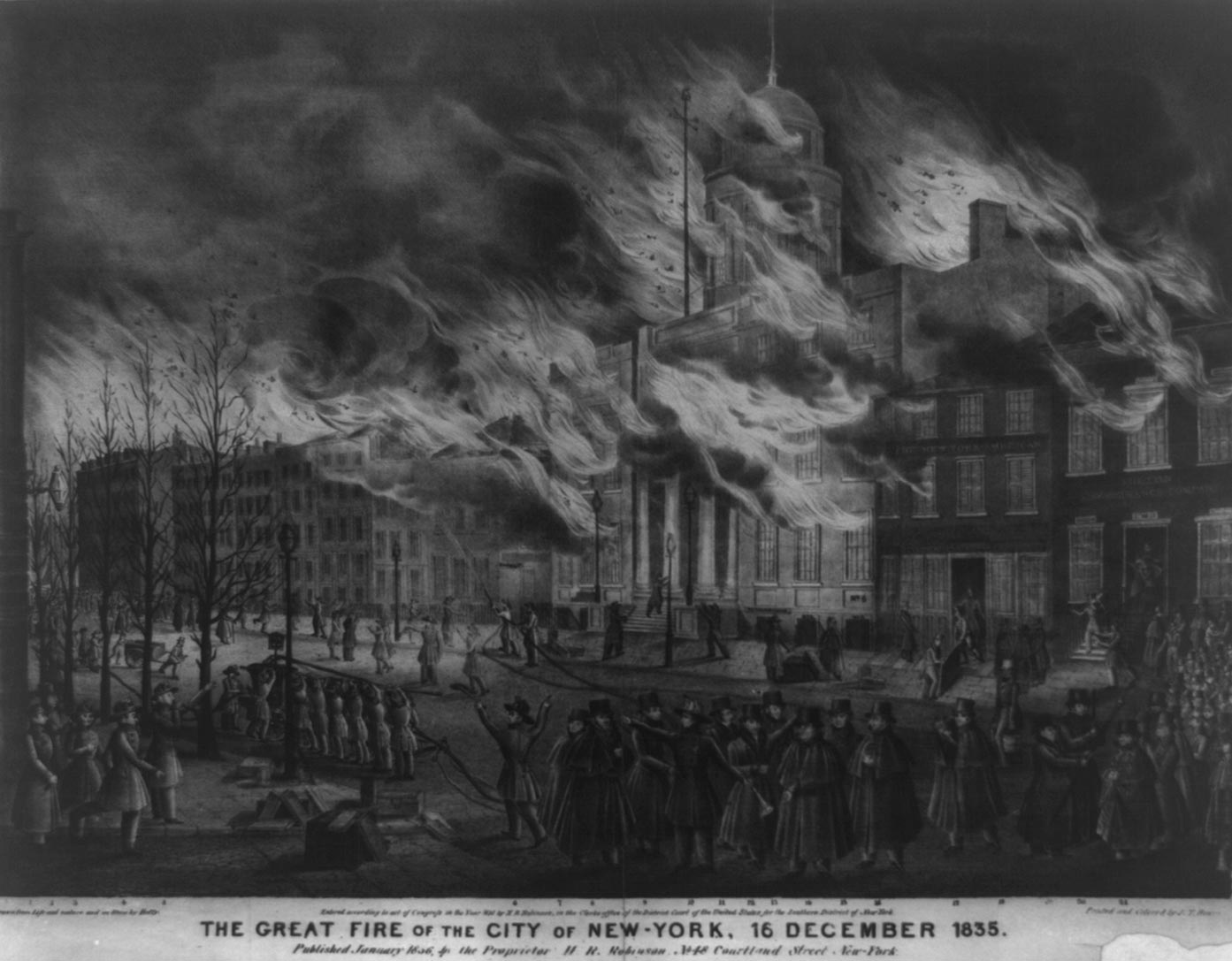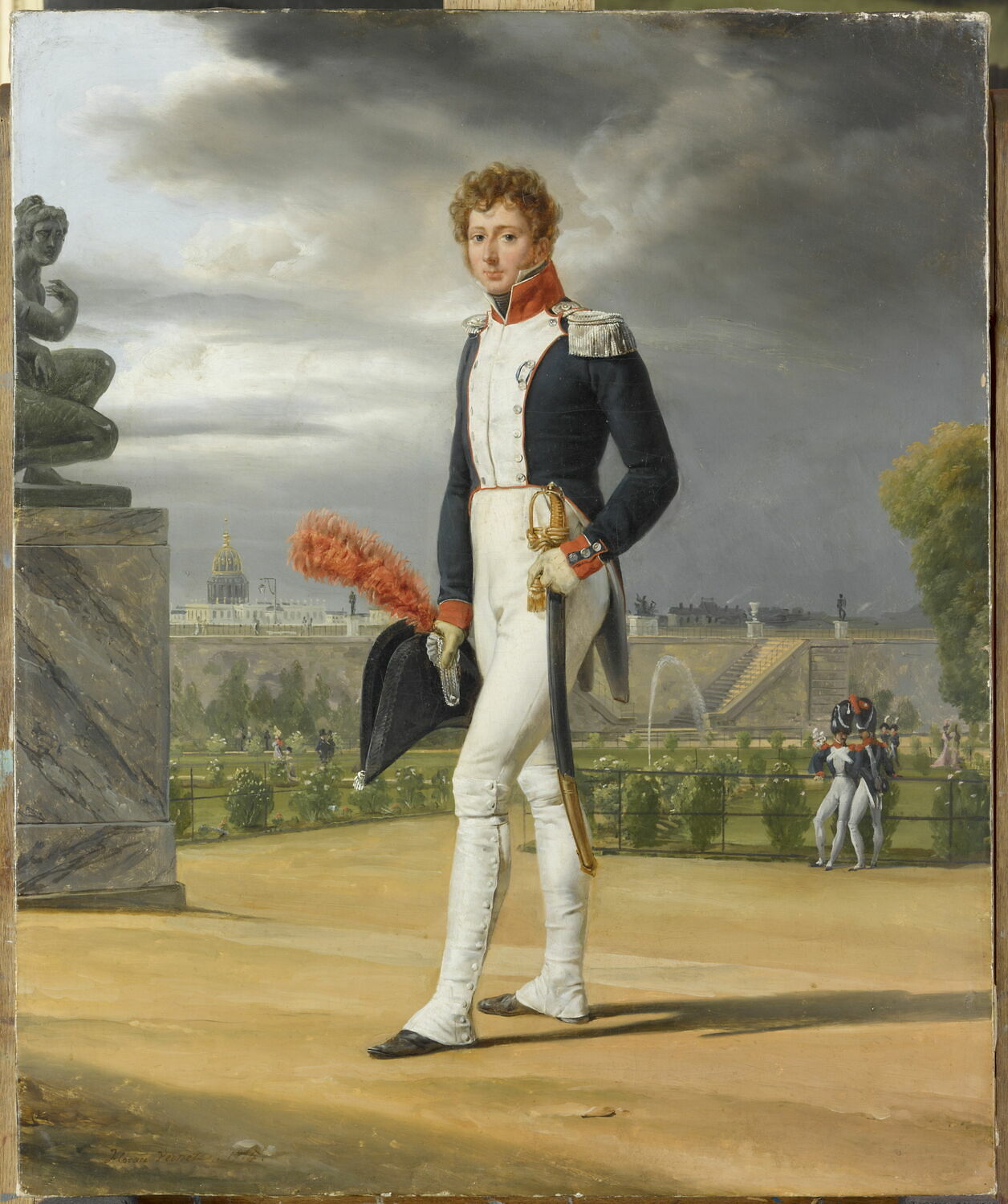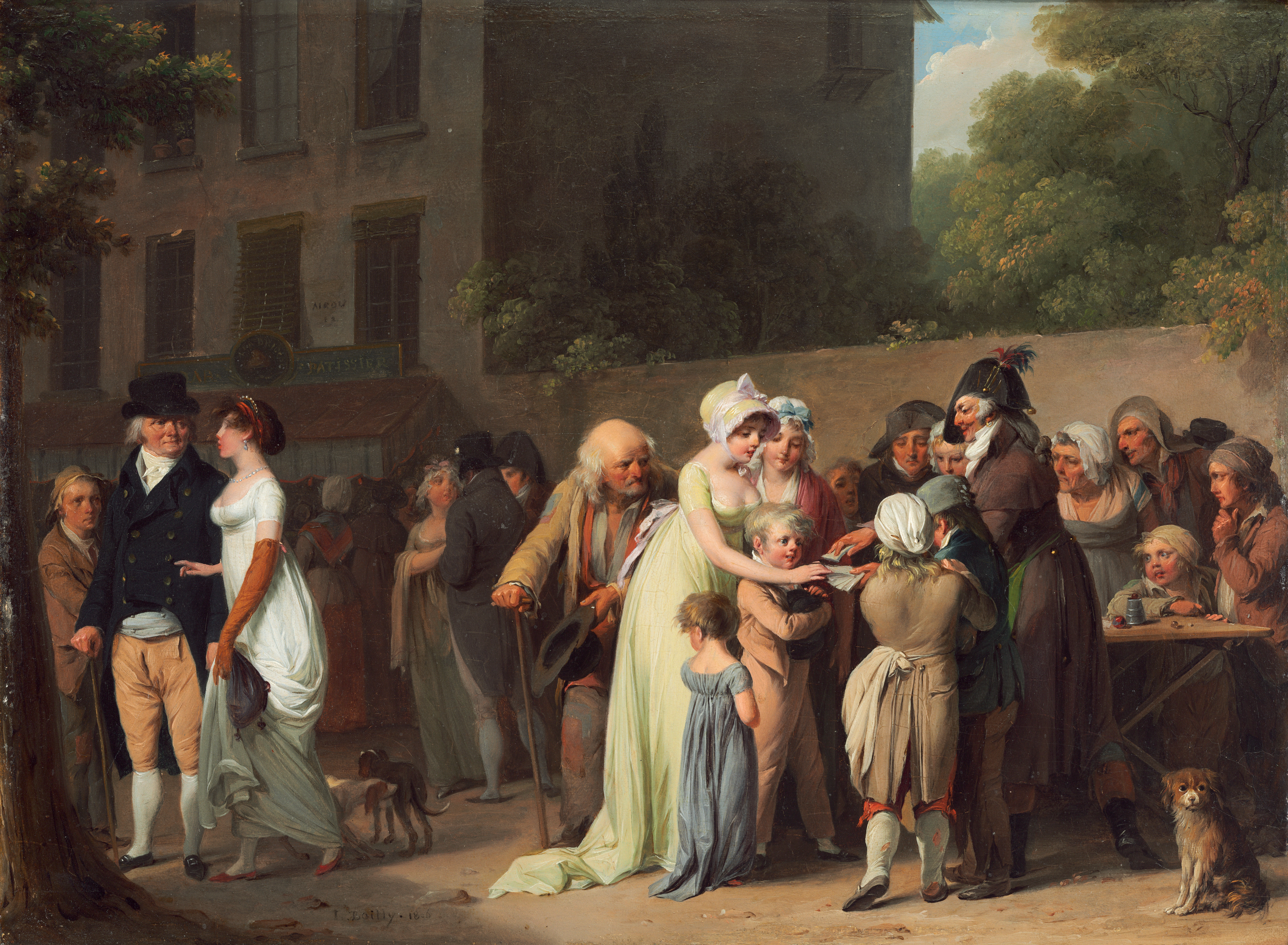|
Infernal Machine (weapon)
The infernal machine () is a homemade 25-barrel volley gun built by Giuseppe Marco Fieschi and used in Fieschi's failed assassination attempt on King Louis Philippe I of France on July 28, 1835. The original gun is now on display at the Musée des Archives Nationales in Paris, France. Design Described as a "supergun", the infernal machine was designed to fire 25 rifle barrels at the same time. Each barrel was originally believed to have been loaded with eight bullets and twenty lead pellets, but a thorough inspection of the misfired barrels by Jean Le Page, Arquebusier Ordinaire to the King, showed that each barrel contained about of gunpowder, 6 to 8 balls, two layers of wadding, and 13 to 14 slugs. The weapon, built of wood and metal, was constructed in a room overlooking the street on the third floor of N. 50 Boulevard du Temple, where it was later used for the failed assassination of Louis Philippe I. The barrels were mounted side by side with each touch hole in line with ... [...More Info...] [...Related Items...] OR: [Wikipedia] [Google] [Baidu] |
Giuseppe Marco Fieschi
Giuseppe Marco Fieschi (13 December 1790 – 19 February 1836) was a Corsican mass murderer, and the chief conspirator in an attempted assassination of King Louis-Philippe of France on 28 July 1835. The attack on the King and his entourage, which made use of a unique volley gun known as the " infernal machine," killed 18 people, but the King only received a minor wound and Fieschi was quickly captured. He and two other conspirators were subsequently tried and executed. Biography Fieschi was born on 13 December 1790 in Bocognano, a commune on the island of Corsica. His parents were Louis and Marie Lucie, of Pomonti. He had two brothers, Thomas and Anthony. Thomas was killed in the Battle of Wagram. Anthony was mute from birth. Giuseppe spent his childhood and adolescence as a shepherd. In 1808 he joined a Corsican regiment and was sent to Naples, then to Russia to fight in the Napoleonic Wars. In 1812 he held the rank of sergeant. He was discharged from the army in 1814 an ... [...More Info...] [...Related Items...] OR: [Wikipedia] [Google] [Baidu] |
Touch Hole
A touch hole, also known as a cannon vent, is a small hole at the rear (breech) portion of the barrel of a muzzleloading gun or cannon. The hole provides external access of an ignition spark into the breech chamber of the barrel (where the combustion of the propellant occurs), either with a slow match (matchlock), a linstock or a flash pan ignited by some type of pyrite- (wheellock) or flint-based gunlock ( snaplock, snaphaunce, and flintlock), which will initiate the combustion of the main gunpowder charge. Without touch hole, it would be nearly impossible to ignite the powder because the only otherwise access into the barrel is from the front via the muzzle, which is obturated by the projectile. In the later caplock firearms, the ignition sparks are generated by a shock-sensitive percussion cap placed over a conical "nipple", which has a hollow conduit known as the flash channel, that leads into the barrel and serves the same function as the touch hole. In modern b ... [...More Info...] [...Related Items...] OR: [Wikipedia] [Google] [Baidu] |
Early Firearms
Early may refer to: Places in the United States * Early, Iowa, a city * Early, Texas, a city * Early Branch, a stream in Missouri * Early County, Georgia * Fort Early, Georgia, an early 19th century fort Music * Early B, stage name of Jamaican dancehall and reggae deejay Earlando Arrington Neil (1957–1994) * Early James, stage name of American singer-songwriter Fredrick Mullis Jr. (born 1993) * ''Early'' (Scritti Politti album), 2005 * ''Early'' (A Certain Ratio album), 2002 * Early Records, a record label Other uses * Early (name), a list of people and fictional characters with the given name or surname * Early effect, an effect in transistor physics * Early, a synonym for ''hotter'' in stellar classification In astronomy, stellar classification is the classification of stars based on their stellar spectrum, spectral characteristics. Electromagnetic radiation from the star is analyzed by splitting it with a Prism (optics), prism or diffraction gratin ... See also * * ... [...More Info...] [...Related Items...] OR: [Wikipedia] [Google] [Baidu] |
19th-century Weapons
The 19th century began on 1 January 1801 (represented by the Roman numerals MDCCCI), and ended on 31 December 1900 (MCM). It was the 9th century of the 2nd millennium. It was characterized by vast social upheaval. Slavery was abolished in much of Europe and the Americas. The First Industrial Revolution, though it began in the late 18th century, expanded beyond its British homeland for the first time during the 19th century, particularly remaking the economies and societies of the Low Countries, France, the Rhineland, Northern Italy, and the Northeastern United States. A few decades later, the Second Industrial Revolution led to ever more massive urbanization and much higher levels of productivity, profit, and prosperity, a pattern that continued into the 20th century. The Catholic Church, in response to the growing influence and power of modernism, secularism and materialism, formed the First Vatican Council in the late 19th century to deal with such problems and confirm ce ... [...More Info...] [...Related Items...] OR: [Wikipedia] [Google] [Baidu] |
Multiple-barrel Firearms
A multiple-barrel firearm is any type of firearm with more than one gun barrel, usually to increase the rate of fire or probability of kill, hit probability and to reduce barrel erosion or overheating. History Volley gun Multiple-barrel firearms date back to the 14th century, when the first primitive volley guns were developed. They are made with several single-shot gun barrel, barrels assembled together for firing a large number of shots, either simultaneously or in quick succession. These firearms were limited in firepower by the number of barrels bundled, and needed to be manually prepared, ignited, and reloaded after each firing. In practice the large volley guns were not particularly more useful than a cannon firing canister shot or grapeshot. Since they were still mounted on a carriage, they could be as hard to aim and move around as a heavy cannon, and the many barrels took as long (if not longer) to reload.Matthew Sharpe "Nock's Volley Gun: A Fearful Discharge" ''A ... [...More Info...] [...Related Items...] OR: [Wikipedia] [Google] [Baidu] |
1835 In France
Events January–March * January 7 – anchors off the Chonos Archipelago on her second voyage, with Charles Darwin on board as naturalist. * January 8 – The United States public debt contracts to zero, for the only time in history. * January 24 – Malê Revolt: African slaves of Yoruba Muslim origin revolt against Brazilian owners at Salvador, Bahia. * January 26 ** Queen Maria II of Portugal marries Auguste de Beauharnais, 2nd Duke of Leuchtenberg, in Lisbon; he dies only two months later. ** Saint Paul's in Macau is largely destroyed by fire after a typhoon hits. * January 30 – The first assassination attempt against a President of the United States is carried out against U.S. President Andrew Jackson at the United States Capitol * February 1 – Slavery is abolished in Mauritius. * February 20 – 1835 Concepción earthquake: Concepción, Chile, is destroyed by an earthquake. The resulting tsunami destroys the neighboring city of Talcahuano. * March 2 – Fer ... [...More Info...] [...Related Items...] OR: [Wikipedia] [Google] [Baidu] |
Volley Fire
Volley fire, as a military tactics, military tactic, is (in its simplest form) the concept of having soldiers shoot in the same direction en masse. In practice, it often consists of having a line of soldiers all discharge their weapons simultaneously at the enemy forces on command, known as "firing a volley", followed by more lines of soldiers repeating the same manoeuvre in turns. This is usually to compensate for the inaccuracy, slow rate of fire (as many early ranged weapons took a long time and much effort to reload), limited effective range and stopping power of individual weapons, which often requires a massed saturation fire, saturation attack to be effective. The volley fire, specifically the musketry volley technique (also known as the musket#Countermarch, countermarch), requires lines of soldiers to step to the front, fire on command and then march back into a column to reload, while the next row repeats the same process. The term "volley" came from Middle French ', s ... [...More Info...] [...Related Items...] OR: [Wikipedia] [Google] [Baidu] |
National Guard (France)
The National Guard () is a French military, gendarmerie, and police reserve force, active in its current form since 2016 but originally founded in 1789 during the French Revolution. It was founded as separate from the French Army and existed both for policing and as a military reserve. However, in its original stages from 1792 to 1795, the National Guard was perceived as revolutionary and the lower ranks were identified with sans-culottes. It experienced a period of official dissolution from 1827 to 1830 but was reestablished. Soon after the Franco-Prussian War of 1870–71, the National Guard in Paris again became viewed as dangerously revolutionary, which contributed to its dissolution in 1871. In 2016, France announced the reestablishment of the National Guard for the second time, in response to a series of terrorist attacks in the country. Creation The raising of a "Bourgeois Guard" (''"garde bourgeoise"'') for Paris was discussed by the National Assembly on 11 Jul ... [...More Info...] [...Related Items...] OR: [Wikipedia] [Google] [Baidu] |
Attentat Durch Joseph Fieschi Auf König Louis-Philippe I
{{disambiguation ...
Attentat or Atentat may refer to: * Attentat (band), Swedish punk band * ''Attentat'' (novel), a 1997 novel by Amélie Nothomb * ''Atentát'', a 1964 Czech film directed by Jiří Sequens *''Atentat'', Ukrainian-language title of the 1995 Ukrainian film about the murder of Stepan Bandera Stepan Andriyovych Bandera (, ; ; 1 January 1909 – 15 October 1959) was a Ukrainian far-right leader of the radical militant wing of the Organization of Ukrainian Nationalists, the OUN-B. Bandera was born in Austria-Hungary, in Galicia (Eas ... [...More Info...] [...Related Items...] OR: [Wikipedia] [Google] [Baidu] |
Boulevard Du Temple
The Boulevard du Temple (), formerly nicknamed the "Boulevard du Crime", is a thoroughfare in Paris that separates the 3rd arrondissement of Paris, 3rd arrondissement from the 11th arrondissement of Paris, 11th. It runs from the Place de la République to the Place Pasdeloup, and its name refers to the nearby Knights Templars' Temple (Paris), Temple, where they established their Paris priory. History The Boulevard du Temple follows the path of the city wall constructed by Charles V of France, Charles V (the so-called ''Wall of Charles V, Enceinte'', constructed between 1356 and 1383) and demolished under Louis XIV. The boulevard, lined with trees, was built between 1656 and 1705. From the time of Louis XVI (1774–1792) until the July Monarchy in 1830, the Boulevard du Temple was popular and fashionable. It was a place for walking and recreation. Cafés and theatres previously located at the Saint-Laurent and Saint-Germain-des-Prés, Saint-Germain fairs moved here. After a t ... [...More Info...] [...Related Items...] OR: [Wikipedia] [Google] [Baidu] |
Musée Des Archives Nationales
The Musée des Archives Nationales (), formerly known as the Musée de l'Histoire de France (), is a state museum of France, French history operated by the Archives nationales (France), Archives Nationales. The museum features exhibitions drawn from the collections of the government archives and aims to provide document-based perspective on France’s history and the evolution of French society. It is housed in the Hôtel de Soubise in the Le Marais, Marais neighborhood in the 4th arrondissement of Paris, Paris, France. It was first established under Napoleon III in 1867, with the direction of Léon de Laborde. History The Hôtel de Soubise was first built in 1371 as the Hôtel de Clisson and later acquired by the Counts and Dukes of Guise, Ducs de Guise. In 1705, it was rebuilt by architect Pierre-Alexis Delamair (1676–1745) for François de Rohan-Soubise and Anne de Rohan-Chabot, with little remaining of the original structure but its turreted medieval gateway which is now th ... [...More Info...] [...Related Items...] OR: [Wikipedia] [Google] [Baidu] |







